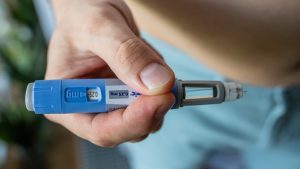Articles / Buruli ulcer cases rising in temperate Victoria

0 hours
These are activities that expand general practice knowledge, skills and attitudes, related to your scope of practice.
0.5 hours
These are activities that require reflection on feedback about your work.
0 hours
These are activities that use your work data to ensure quality results.
These are activities that expand general practice knowledge, skills and attitudes, related to your scope of practice.
These are activities that require reflection on feedback about your work.
These are activities that use your work data to ensure quality results.
In a strange paradox, neglected tropical disease Buruli ulcer is on the rise in the distinctly non-tropical state of Victoria.
Buruli ulcers typically show up in GP during winter and spring, but the infections that cause them are acquired months earlier. That means prevention during the summer and autumn mosquito seasons is key to protecting people in affected areas, says Buruli researcher Professor Paul Johnson, Infectious Diseases Physician at Austin Health and the University of Melbourne.
An infection caused by Mycobacterium ulcerans, Buruli ulcer occurs in small endemic areas in at least 30 countries. It is often described as a flesh-eating disease because a slow acting toxin produced by the bacteria leads to ulceration and skin loss, which extensively damages the subcutaneous fat later and overlying skin. Left untreated, Buruli ulcer can result in disability and disfigurement.
While Australian cases have been reported in Queensland and the Northern Territory, “it’s only in Victoria, Australia, where it’s really rising rapidly,” Professor Johnson says.
“Victoria is not a tropical state, and yet we have this exponential expansion in a neglected tropical disease, especially in the last 10 years. And we’re seeing two things—increased numbers, but also increased numbers of endemic areas.”
Buruli is classified as a geographically restricted infection, which means you can’t get it if you don’t enter an endemic area, he adds.
Recent research has confirmed the disease, which starts as an epidemic in local possum populations, is predominantly transmitted by mosquitoes.
“So possums living nearby humans get infected somehow. We don’t quite know that. But once it starts, they spread it to each other. And more and more possums get it. And then humans become what we call a spillover host. So they kind of get accidentally caught up in something that’s going on above them in the trees.”
“There’s been research showing that the most likely part of your body to get a lesion is where mosquitoes tend to bite you. For example, it’s very common on the backs of the legs, backs of the arms and around the ankles; but rare on the sole of the foot or palm of the hand.”
With about 350 cases each year in Victoria now (compared to about three to five in Queensland), “there’s a reasonable chance that a patient will turn up at some stage with this unusual ulcer if you practice in an endemic area,” he says.
These areas include:
Patients with Buruli ulcer typically present during winter, but it’s crucial to discuss prevention during summer and autumn, Professor Johnson stresses.
This is because Victoria has a distinct mosquito season from October to April. “And that is when transmission occurs,” he says. “But it takes five months on average to get a lesion starting to come up.”
“If you go for your summer holidays down onto the Mornington Peninsula, then you can acquire it there. And then back in the dreary winter, you suddenly notice something’s happening in your skin.”
“So from the GP point of view, if you get an opportunity, bring it to people’s attention that avoiding mosquito bites is the best thing we can do to prevent this disease in endemic areas at the moment.”
A good specimen will accurately confirm the diagnosis, Professor Johnson says.
“Make sure when you take a swab that you really get good biological material that you can see. Run it around and get some good goo from around the undermined edge of the ulcer,” he says.
About 10 to 20% of cases present with a plaque lesion that precedes ulcer development, he adds, in which case you’ll need to do a punch biopsy.
Wide excision surgery was once the gold standard but now most patients can be treated with dual antibiotic therapy instead, Professor Johnson says.
“But it’s a little bit tricky because Buruli ulcer won’t respond to the usual Keflex or Flucloxacillin doctors often prescribe for skin infections. So it’s an eight week course of clarithromycin and rifampicin together. Some doctors use rifampicin and ciproxin together.”
Importantly, things get worse during treatment before they get better, which can unnerve both patients and inexperienced doctors, he says. Healing is typically protracted and requires a lot of dressings.
“It’s all very sort of mucky and slow,” Professor Johnson says. “The median time to heal after antibiotics is about 14 to 16 weeks. But small ones heal fast and big ones heal more slowly.”
“We now know that the antibiotics kill the bacteria very quickly and effectively, but the ulcer itself and the damage to the patient is still there for quite a long time,” he explains.
“Discharge can be quite copious and it makes everyone worry, but it’s actually great because that’s all the dead bacteria and also the dead fat. And all that stuff comes out through the ulcer and can keep going for weeks even after the antibiotics are completed. So that’s all good, but it’s annoying and difficult and can be quite expensive for people to have dressing changes.”
Buruli ulcer can be managed in general practice, but some doctors prefer to refer patients to an infectious disease specialist, he says, noting antibiotics and dressings may be cheaper through the public hospital system.
Professor Johnson’s Buruli website page has information, photos and research/public health links.
New consensus treatment guidelines will be published in the Medical Journal of Australia early this year.
Based on this educational activity, complete these learning modules to gain additional CPD.

Menopausal Hormone Therapy - What Dose of Estrogen is Best?

Cardiovascular Benefits of GLP1s – New Evidence

Oral Contraceptive Pill in Teens

RSV and the Heart



Modified but kept in place
Eliminated entirely without replacement
Maintained as is
Completely replaced with an alternative system
Listen to expert interviews.
Click to open in a new tab
Browse the latest articles from Healthed.
Once you confirm you’ve read this article you can complete a Patient Case Review to earn 0.5 hours CPD in the Reviewing Performance (RP) category.
Select ‘Confirm & learn‘ when you have read this article in its entirety and you will be taken to begin your Patient Case Review.
Menopause and MHT
Multiple sclerosis vs antibody disease
Using SGLT2 to reduce cardiovascular death in T2D
Peripheral arterial disease
